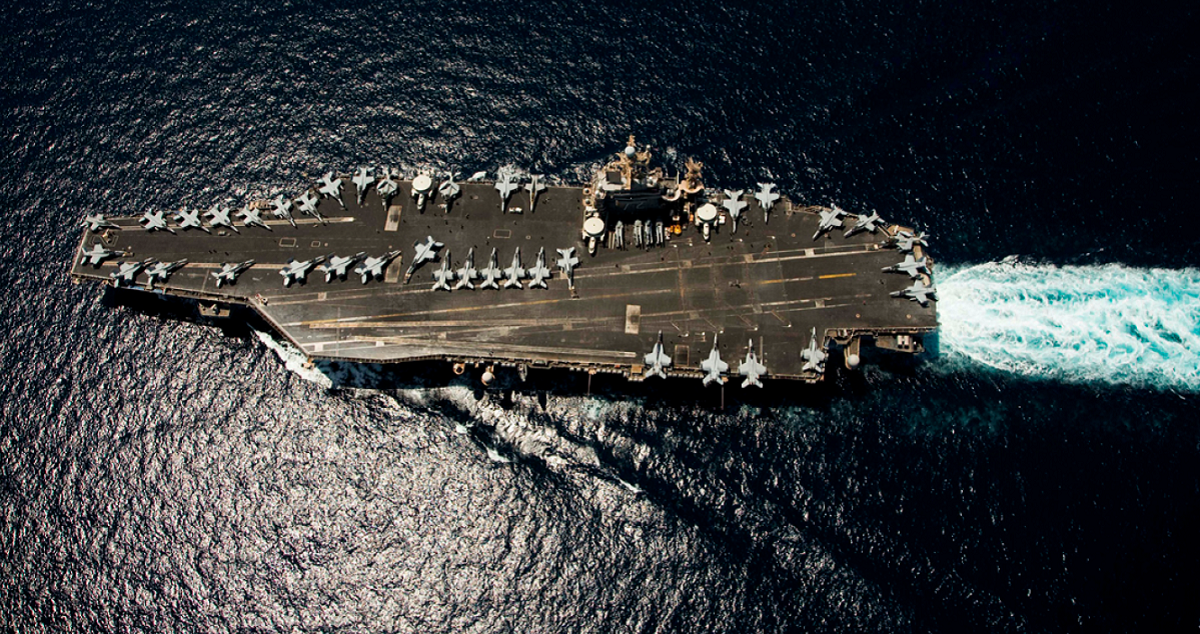Driven by cyber-attacks, an increasing need for connectivity in remote locations and a dispersed threat of attack, the demand for a more distributed operational model is rising and so is the importance of connectivity between command centers and forward operating bases.
Recent and new technology developments are enabling a progressively connected military force to develop an increasingly resilient digital backbone to maintain Total Asset Readiness®, almost 24×7 visibility into the status of their personnel and equipment.
But disruptions to this connectivity can cause issues during crucial moments of service, such as the immediate need to release an aircraft or a ship to engage a potential threat. An accurate picture of readily available equipment is paramount for the success of any mission and for the protection of military personnel. These ‘dark’ periods are now a key focus area for defense forces.
Planned or unplanned outages exacerbated by new operating models
A recent study from RAND Corporation, an American non-profit global policy think tank, focused on emerging ‘distributed operations’ concepts that require a larger number of airbases to complicate enemy targeting. Due to air and missile threats posed to larger main bases, the recommendation is for the U.S. Air Force to conduct missions from smaller forward operating bases (FOBs), but consistent connectivity between a main operating center or base (MOB) and these distributed FOBs is essential.
Some planned clandestine military operations will be conducted in ‘dark mode’ where due to their sensitive nature, a disconnected environment and a minimized detectable electronic signature is pivotal. Planned disconnected operations are normal day-to-day business for a navy frigate sailing in the South Pacific—using a disconnected, intermittent, and limited bandwidth mode for much of its detachment.
The key requirement in periods of planned or unplanned connectivity disruption is the ability to aggregate, update and re-sync data back to a MOB as soon as connectivity is re-established, mitigating the impact of any outage.

Disconnected Operations—it’s data dependent
Re-syncing information such as engineering & maintenance data, technical records and more may sound simple, but this is a very difficult task to manage from a data architecture perspective.
While aircraft or vehicle systems will usually be connected for 99% of the time, data inconsistency is probable during the 1% of time they may spend disconnected. Without consistent information on what has taken place during a mission, the MOB cannot gain a single version of the truth on the asset’s status and availability—limiting a commander’s decision capability.
This applies to many military assets, including naval equipment which commonly operates at huge scale and in disconnected environments. This scale is only set to increase, as U.S. Navy plans highlight a force-level goal for an even more distributed fleet architecture.
Data exchange must work both ways
But information exchange must be two-way. Equipment updates from a MOB will need to be received by FOB personnel, and assets come with an allowable baseline configuration, which change and update regularly. In defense operations, the Central Engineering Authority (CEA) creates and maintains the maintenance and equipment baselines, and baselines at autonomous bases must remain up-to-date.
Changes to allowable configuration or critical technical bulletins must be ‘pushed’ outwards to all operational nodes and certain airworthiness updates may directly impact an individual aircraft’s safety and ability to carry out a mission so, accessibility for front line personnel is integral. Keeping Total Asset Readiness achievable despite connectivity challenges lies within the “quality” of this data and the timely, accurate information offered by a two-way data exchange will in turn, render into better strategic decision-making.
Purpose-built software required – to support three critical focus areas
Military operators require purpose-built software to address the unique challenges of operating from remote and austere environments. A containerized software architecture is key, and involves bundling an application together with all the related configuration files, libraries and dependencies required to run efficiently across different environments. Containerization meets the challenges of scale, rapid deployability and being self-contained as secure, standalone software.
IFS has achieved exactly this with its Disconnected Operations functionality unveiled at the launch of IFS Cloud. The solution supports data aggregation, transfer and analysis between an MOB and FOB to deliver in three core ways:

1. Asset compliance and baseline updates
Supporting software should be able to address the core requirement needed to transfer assets between nodes, including asset transfers and baseline and records transfers. Workflow management functionality should prepare deployments and imports of assets from MOBs to FOBs and vice versa.
2. Technical Records Repository
When technical records are created in multiple internal or external systems, command or central maintenance management requires an aggregated view to make and confirm tactical capability decisions. A Technical Records Repository (TRR) should enable access to the full set of historical records for maintenance performed and usage accrued on an aircraft or component.
With a reliable, and up-to-date TRR, the CEA can put trust in the data that is being fed back to them from the field – resulting in a feedback loop with central command to accurately determine force-wide availability and operational readiness.
3. Extending the core maintenance system to deliver “Anywhere operations”
This functionality should be fully integrated into core maintenance management software, eliminating the need for data duplication. This integration delivers a complete spectrum of military equipment maintenance management in a single integrated business platform.
Total Asset Readiness maintained at all times
Carrying out disconnected operations requires a sophisticated underlying software architecture that will protect military operations during critical moments of service. With the right software infrastructure, military organizations can be confident that Total Asset Readiness can be achieved and that a consistent picture for all commanders, frontline personnel and maintenance centers on the status of available equipment is available, regardless of connectivity interruptions.
To find out more information and explore other considerations for military disconnected operations, download this white paper.

Do you have questions or comments?
We’d love to hear them so please leave us a message below.